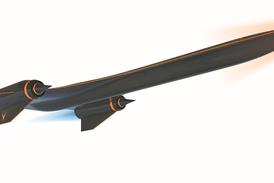 Luís Carlos Affonso (left) is a qualified aeronautical engineer and has worked for Embraer for over 20 years. His achievements have included bringing the ERJ-145 to first flight and certification and overseeing the programme for the 170 and 190 regional jets. In 2005 he was appointed senior vice-president for corporate aviation as part of the company’s drive to augment its market share in the sector.
Luís Carlos Affonso (left) is a qualified aeronautical engineer and has worked for Embraer for over 20 years. His achievements have included bringing the ERJ-145 to first flight and certification and overseeing the programme for the 170 and 190 regional jets. In 2005 he was appointed senior vice-president for corporate aviation as part of the company’s drive to augment its market share in the sector.
Do you have any update news for us on the Phenom programmes?
The Phenom 100 completed its joint definition phase in January. We’ll have the first metal cut by the second quarter; assembly by the end of this year; final assembly by the first quarter of 2007 and first flight in 2007.
What do you think are the prospects for business aviation growth in Asia?
The Asian market is the fastest growing. China is set to grow by 6.6% in 10 years and the rest of Asia will grow at 9.5% over the same period, so it is the most important region in the world. Business jets are increasingly seen as a credible tool. There is a cultural change happening to drive solutions. This will happen over time, not overnight, but we are seeing an upturn.
What are the major hurdles for growth in the region?
Difficulties arise with important infrastructure barriers, which impact the opportunities a little. Major challenges are the lack of airports and high import taxes in China. Regulations are frequently not streamlined, so it is time- consuming to book a flight plan and, of course, there is a shortage of pilots. Local governments are already taking some action and facilitating the creation of flying schools. The region as a whole must make it more attractive for flight-training organisations to set up shop. We believe the Phenom 100 can make a contribution in that regard as it is a good aircraft for jet training at low cost.
Where in the region do you see most of your sales coming from?
We see the Legacy being very popular in China, which has a bigger appetite for larger jets. In India we see a very good opportunity for both the Legacy and the Phenoms, with lots of air-taxi operators in the country. The market varies from country to country. Over the past 18 months we have delivered seven Legacys here and are going to deliver two more this year – none in China yet, but we are getting strong interest there - and from Japan.
Although general aviation is growing in the region, it is still very small. Given it takes roughly three years for a trainee to graduate, where are the owner-operators going to come from for the very lights? Where do you anticipate training them?
Of course there are more owner operators in the USA, but we also see the Phenom 100 being used in flight-training schools and in charter companies in Asia. The Phenom is designed to be easy to fly. The cockpit interface is very easy to use, much simpler than a heavy turboprop and will facilitate flying.
Initially, we are offering training in the regions where we have made sales and have a fleet of aircraft to use. At first we anticipate this being in the USA and Europe, but as the fleet expands, we will offer training where we have aircraft.
When you took on your latest role, you said that Embraer’s goal, beyond launching new products, is to create an “integrated solution” for business aviation that includes comprehensive support programmes; extensive service-centre coverage; third-party financing packages; aircraft exchange facilitation; and fixed-base operator and aircraft management partnerships. How are you implementing these goals in the Asian region?
During 2005 we invested very heavily in our customer support area, which is very different in the business sector than it is in the commercial sector. This is why the company restructured. We are focusing on executive aviation and have revised our strategies. We now offer our customers a monthly fee, which covers everything. We have modified our programmes, training procedures and our authorised service centres. This tear will see us build our customer support for the Legacy and the Phenom. We will put special efforts into training and support programmes. We will particularly concentrate on our network of service centres and implement universal standards for all aspects of our offering, down to spare parts and mechanic training.
We are expanding in Asia Pacific and will create two more service centres in the region during 2006 and announce their location later in the year. We will strengthen our sales teams in China and Singapore. Even if we do not create new offices we will place individuals in countries. We will be disclosing our strategies and announcing partnerships throughout 2006.
Finally, Embraer is pitching the Phenoms at current GA pilots and owner-operators on the basis that they will be easy to learn to fly. As an avid private pilot, how likely are you to be one of the first students?
It’s a dream of mine! If I can find time to fly more and do the ground school I would be a perfect example of someone with less experience being able to adapt confidently to the Phenom.
Source: Flight Daily News























